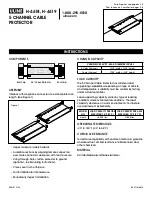
⎯
19
⎯
6 F 2 S 0 7 5 8
2.1.2.2 Directional Characteristics
Figure 2.1.12 illustrates the directional characteristic, with the forward operate zone shaded. The
reverse zone is simply a mirror image of the forward zone. The forward operate zone or reverse
operate zone is selectable by the scheme switch [OC-DIR], [EF-DIR], [SE-DIR] and [NC-DIR].
As shown in Figure 2.1.13, each directional characteristic is composed of forward directional
characteristic, reverse directional characteristic and overcurrent thresholds.
5 x Is
10 x Is
CA
CA + 30
CA + 60
CA - 30
CA - 60
CA - 180
Forward
Operate
Zone
Boundary of Operation
(lagging)
Boundary of Operation
(leading)
Reverse
Operate
Zone
CA + 90
CA - 90
CA: Characteristic angle
CA - 180
5 x Is
10 x Is
CA
CA + 30
CA + 60
CA - 30
CA - 60
CA - 180
Forward
Operate
Zone
Boundary of Operation
- 87.5
°
(lagging)
Boundary of Operation
+87.5
°
(leading)
Reverse
Operate
Zone
CA + 90
CA - 90
CA: Characteristic angle
(a) Characteristic of OC, EF and NOC
(b) Characteristic of SEF
Figure 2.1.12 Directional Operate Characteristic
Figure 2.1.13 Directional element
Polarising signals of directional elements are shown in Figure 2.1.14. Polarisation for directional
phase overcurrent element OC is achieved by the 90
°
quadrature method, whereby each current’s
phase angle is compared with the phase to phase voltage between the other two phases. Since the
voltage inputs to the relay will normally be connected phase to neutral, the polarising phase to
phase voltages are derived internally. The polarizing negative sequence voltage is also derived
internally. The polarizing zero sequence voltage is derived from a residual voltage or internally
depending on the model. Direction is determined in each case by measuring the phase angle of the
current with respect to a suitable polarising quantity. Table 2.1.2 summarises the current inputs
and their respective polarising signals. For details of the relationship between directional earth
fault protection and power system earthing, see Appendix B.
Vpol
I
0
Forward
θ
+
θ
:
lead angle
−
θ
:
lag angle
θ
: Characteristic
angle
Reverse
Stage
4
1
2
3
Directional
(Forward)
Directional (Reverse)
Overcurrent (1-4 stage)
&
&
∗∗
1-4
Forward
∗∗
1-4
Reverse
(0
≤
θ
setting
≤
-95)
(95
≥
θ
setting
>
0)
(Note) NOC provides stage 1 and 2 only.

































